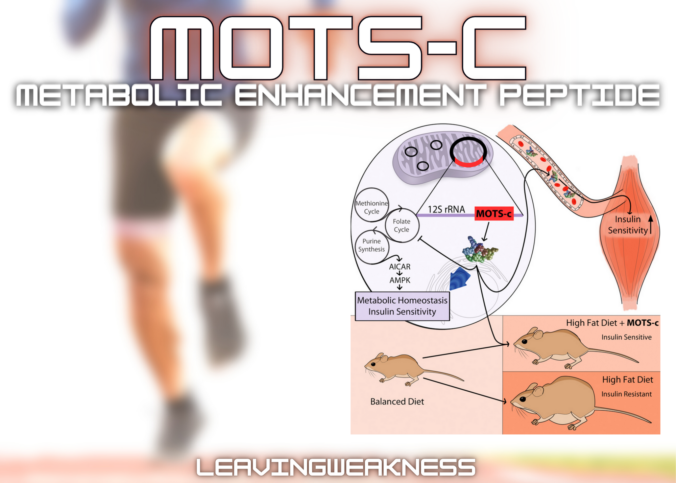MOTS-c is a 16-amino-acid peptide encoded in the mitochondrial genome. Mitochondria play a critical role in the generation of metabolic energy and is responsible for most of the useful energy derived from the breakdown of carbohydrates and fatty acids, which is converted to ATP.
The peptide has been researched extensively in the last few years due to its therapeutic potential, with no shortage of complex research documentation available for reading. Research to date has shown this peptide plays important roles in metabolism, weight regulation, exercise capacity, insulin sensitivity, longevity, anti aging, and even processes leading to disease states like osteoporosis.
My theory is that MOTS-c is eventually going to be praised as the next exercise in a bottle similar to Cardarine a few years ago.
This peptide is a member of the larger group of mitochondrial-derived peptides (MDPs) which have recently been found to be bioactive hormones that play important roles in mitochondrial communication and energy regulation. At this point, MOTS-c can even be considered a natural hormone because it has been found in the nucleus of cells as well as in the general circulation.
Here are some key takeaways from the various research articles available:
Enhanced Metabolism
MOTS-c can reverse age-dependent insulin resistance in muscles by improving skeletal muscle response to AMPK activation. Doing this increases the expression of glucose transporters and boosts glucose uptake by muscles when there isn’t a sufficient amount of insulin. The ultimate result is improved muscle function and enhanced enhanced muscle growth
Longevity and Anti-Aging
Research on MOTS-c has identified a specific change in the peptide that is associated with longevity in certain human populations and its believed the substitution of a glutamate residue for the lysine that is normally found in position 14 of the protein is doing something to radically change the structure and the function of the MOTS-c gene. More research is required to understand how this change affects function, but it is found exclusively in people with Northeast Asian ancestry as mitochondrial biology holds the key to extending both lifespan and healthspan in humans.
Insulin Sensitivity
MOTS-c mediates mitochondrial regulation of insulin and metabolic homeostasis. Research measuring MOTS-c levels in insulin sensitive and insulin resistant individuals has shown that the protein is associated with insulin sensitivity only in lean individuals. Promising research in mice suggests that the peptide could be used to monitor pre-diabetic individuals and is looking for changes in MOTS-c levels as an early indicator of potential insulin insensitivity.
MOTS-c Enhances Fat Metabolism
MOTS-c targets muscle and regulates metabolism via the folate-purine-AMPK pathway which is turned on when cellular energy levels are low and it drives the uptake of both glucose and fatty acids by cells for metabolism.
MOTS-c appears to prevent fat accumulation by down-regulating specific pathways and increasing beta-oxidation. MOTS-c supplementation in rats prevents mitochondrial dysfunction and prevents the accumulation of fat even in the setting of a high-fat diet.
MOTS-c Peptide Dosing
There a few really well documented dosing protocols that independent researchers have followed that provided enhanced endurance and fat loss.
The first protocol is to take 10 mg of MOTS-C injected once per week, for up to 10 weeks in a row.
The second protocol I found is more complicated. It starts with 5 mg of MOTS-C injected subcutaneously 3 times per week (M/W/F) for 4 to 6 weeks. This is then followed by a 5mg dose once per week for another 4 weeks.
Source for MOTS-C peptide
The best source on the internet for peptides is Amino Asylum. I’ve been using their products for years and have always been thoroughly impressed by their huge selection of products.
CLICK HERE to buy MOTS-c Peptide.


Leave a Reply